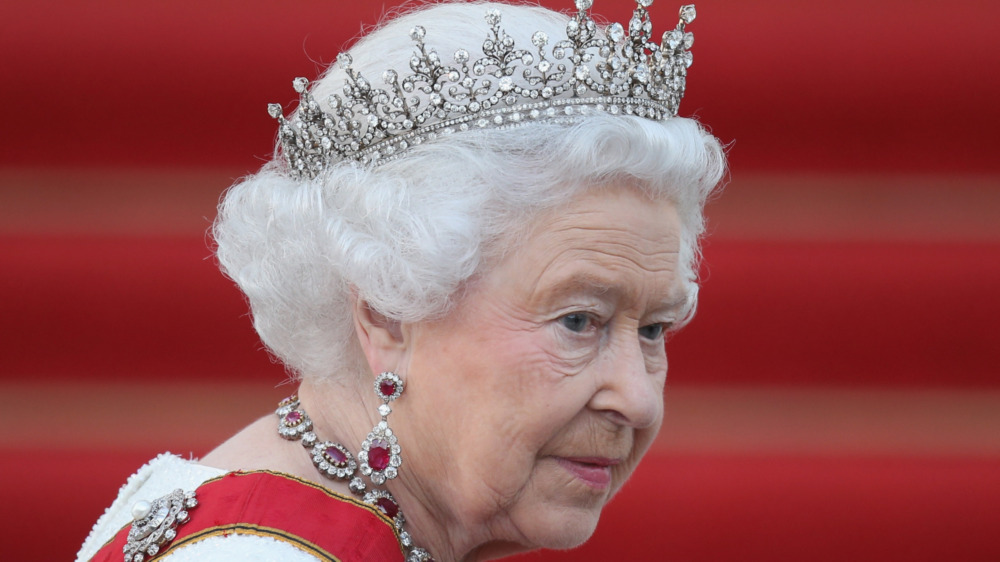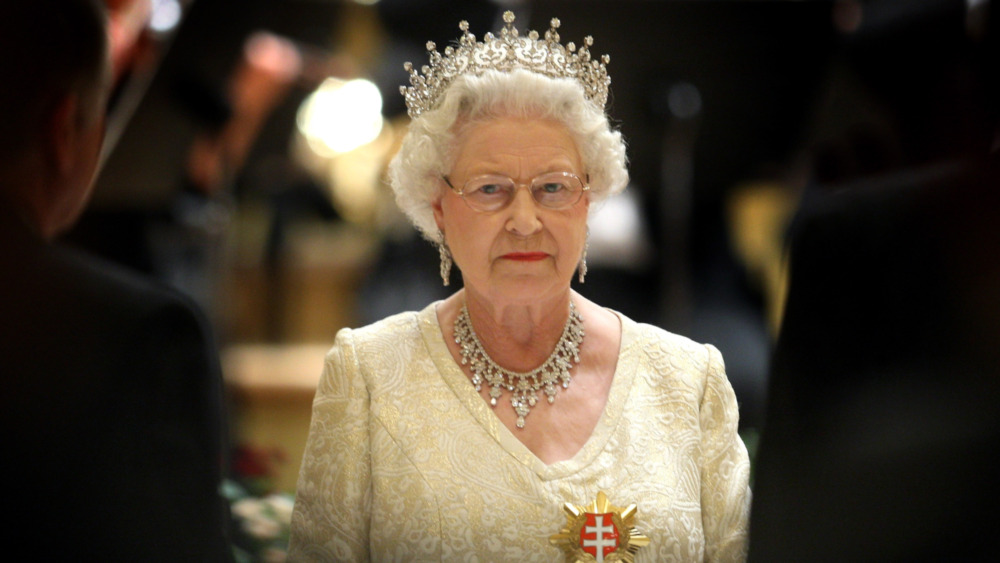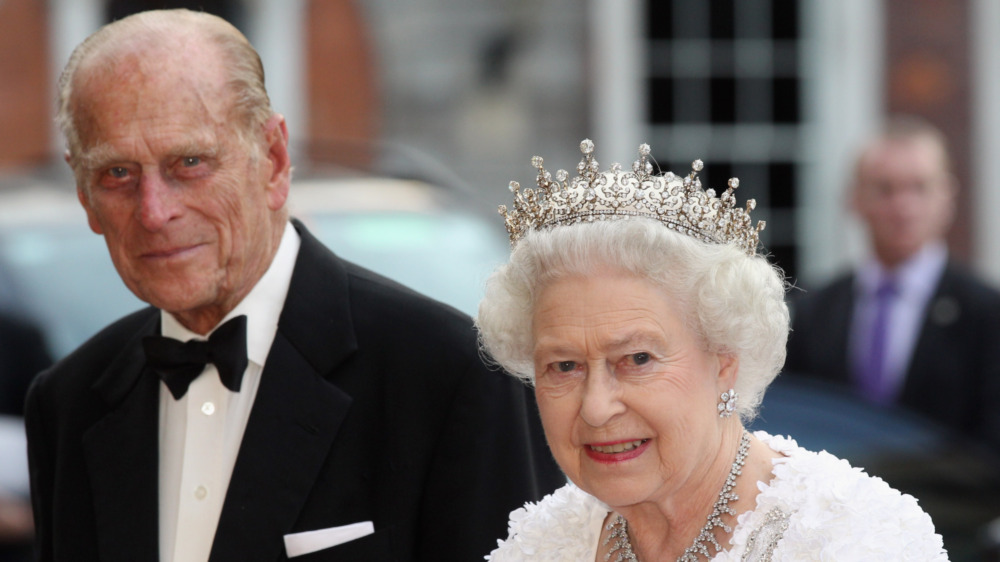The Real Reason The Queen Will Sit Alone At Prince Philip's Funeral
As is custom, Queen Elizabeth II is slowly resuming official functions, despite the death of her husband, Prince Philip, Duke of Edinburgh. As per People, on Tuesday, April 13, less than a week after Prince Philip passed away, the queen hosted a retirement ceremony for Earl Peel. The event was not without significance. Peel, who formerly served as Lord Chamberlain, had been the person in charge of overseeing the Duke of Edinburgh's funeral arrangements.
While the queen will likely continue to carry on with official functions, royal experts have nonetheless confirmed that she is "absolutely devastated" by her husband's death (via Today). The comfort of family and friends nearby can be invaluable during times of grief, but at Prince Philip's funeral, his wife will likely have to be seated by herself. There is no royal protocol that dictates this unusual and lonely seating arrangement. In fact, at her sister, Princess Margaret's funeral, which also took place at St. George's Chapel, the queen was closely accompanied by her family (via CNN).
Prince Philip's ceremony will, however, be dramatically different from royal funerals past. BBC reports that the planned processions will be significantly smaller than usual. The queen will not walk behind the Land Rover carrying her husband's coffin. Instead, she will travel separately to the chapel, where, due to ongoing COVID restrictions in the UK, a maximum of 30 people is allowed at the ceremony. All in attendance will be expected to wear face makes, regardless of vaccination status or negative COVID-19 tests.
New regulations require unusual royal seating arrangements
The same health and safety regulations that will limit the size of Prince Philip's ceremony will dictate seating at his funeral. The UK currently requires anyone not living in the same household to remain two meters (around six feet) apart (via Telegraph).
Granted: laws regarding the pandemic in the UK allow some households to mix, but not all. Adults living alone or single parents with kids under the age of 18 can form a support "bubble" with another household (via BBC). Because the queen doesn't live alone, she wasn't eligible to create a bubble with another household (via Telegraph). She was, in essence, in her own bubble with 22 staff and her husband — a bubble that the Windsor Castle Master of the Household referred to as the "HMS Bubble" (via Vanity Fair).
As a result, neither Queen Elizabeth's children, nor her grandchildren, nor her great-grandchildren will be able to sit next to her. There is, however, one person who might be able to legally accompany Queen Elizabeth. The media is still speculating over the funeral's official mourner's list, but most agree that the duke's private secretary, Brigadier Archie Miller-Bakewell, is on it. Because he was a member of the household at Windsor Castle, he would be the only one in attendance eligible to sit with the queen (via Telegraph). Miller-Bakewell was one of Prince Philip's closest advisors, having worked for him since 2010. He'll also likely be the only non-royal in attendance at the prince's funeral (via Royal Central).
Prince Philip's funeral will be like few others in royal history
If the queen ends up sitting alone, it will, of course, be a poignant visual reminder that she's without her husband of 73 years. But whether or not she does, Prince Philip's funeral is unlikely to resemble any royal funeral we've witnessed in the past. That's not to say that everything has changed. BBC reports that military rehearsals for the funeral procession are well underway, and 730 military personnel (members of the Royal Navy, Royal Marines, Army, and RAF) are purportedly expected to parade. All those participating have, apparently, been tested for COVID, and social distancing will be enforced.
Of course, no member of the public will be present. Buckingham palace is furthermore working hard to ensure that the public has nothing to watch. As a royal spokesperson confirmed, "People turning up at Windsor [on] Saturday will not be able to see anything" (via Town & Country). Instead, those hoping to pay their respects will have to resort to television. This will differentiate the Duke of Edinburgh's ceremony from, for example, that of Princess Diana's, which attracted, according to USA Today, over 1 million, in-person mourners along its procession route.
The changes to the prince's funeral arrangements (barring seating restrictions at the chapel) may have been exactly what the prince would have wanted. "Ironically, it is probably how he would have liked," former palace spokeswoman Ailsa Anderson told People, "No fuss, no bother. Right through his life, he never knew what all the fuss was about."


